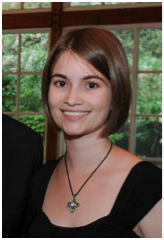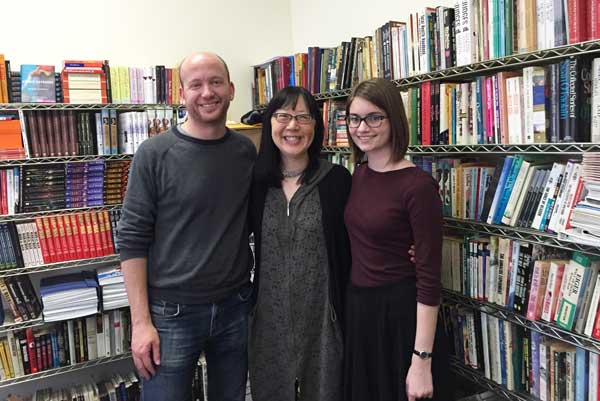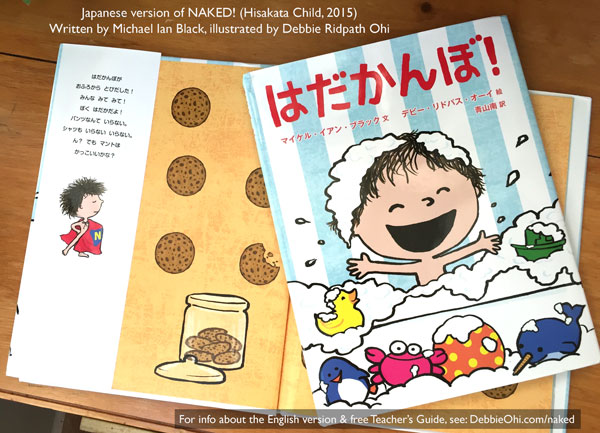
I’m thrilled that my books have been translated into French, Spanish, Japanese, Korean and Chinese, and am grateful to the Curtis Brown Translation Rights department for all their help. Jonathan Lyons and Sarah Perillo have kindly agreed to answer a few questions for me about the picture book translation rights process at Curtis Brown.

Jonathan Lyons represents a select list of authors of biographies, history, science, pop culture, sports, general narrative non-fiction, mysteries, thrillers, science fiction and fantasy, and young adult fiction, in addition to serving as subagent in the United States for several agencies in the UK. Having previously run translation rights at McIntosh & Otis and Folio Literary Management, Jonathan currently oversees Curtis Brown’s translation rights department. Jonathan is also a licensed publishing attorney, a member of The Authors Guild, and an adjunct professor at New York University’s Master of Science in Publishing Program, where he teaches a course on contract negotiation.

Sarah Perillo has worked in Curtis Brown’s translation rights department since May 2013. She also assists Jonathan and runs the agency’s social media accounts. She studied English and Spanish literature at George Washington University and now lives in Manhattan. In addition to her continued work in translation rights, Sarah is building her own list. She hopes to connect with writers from a variety of genres, including adult literary and commercial fiction, speculative fiction, horror, mysteries, and select thrillers and YA—and in all of those, she looks for an engaging, layered protagonist and a strong command of narrative voice. In non-fiction she’s interested in history, politics, social issues, and natural history, with a particular fondness for anything involving animals or food.

Q. When you’ve sold translation rights for a picture book, is it usually because you’ve taken the book to an event like Bologna or because publishers have approached you?
We most often secure deals by pitching our clients’ works to foreign publishers, whether directly or through our co-agents in each territory. These pitches primarily take place in meetings we have with publishers in our office or at book fairs like Bologna and Frankfurt, or over email or by phone. However, some sales are secured through publishers approaching us, typically because their scout has recommended the title to them.
Q. Do you hire translators or does the foreign publisher handle the actual translation?
The foreign publisher will hire a translator.
Q. What are some challenges you encounter when selling translation rights to picture books?
Both the subject matter and the overall look must be something that matches with the culture of the market in which we are trying to sell the work in order to have success. As you might imagine, there are many wonderful picture books on the market in the United States that discuss uniquely American experiences that will have little resonance abroad. Too, some markets prefer a more classic look when it comes to illustrations, while others prefer a more modern styling. And even when the tone and look of a picture book could work abroad, we still face the challenge of securing a deal in a highly competitive marketplace, especially in Europe where there is often a strong preference for works from resident authors and illustrators.
Q. What are the strongest picture book markets in translation at the moment?
The Korean market has historically been the most vibrant market for translated picture books, and this continues to be the case today. However, the Chinese market has grown significantly, and the Japanese market is quite strong as well. We also often have success in Western Europe, Brazil and Mexico, depending on the specific picture book title.
Q. What exactly happens at book fairs like Bologna and Frankfurt?
We spend the week meeting with editors from around the world, hearing about what kinds of projects they’re seeking and pitching the books on our list that we think might be a good fit. We also meet with our co-agents from each territory to discuss general market trends and some particulars of our collaboration. Fairs are often the only times we get to meet face-to-face with the people we work closely with over email during the rest of the year. It’s the best chance to build relationships with overseas colleagues and really convey our passion, in person, for the titles we represent.
But there’s a huge amount of work that happens before we even arrive at the fairs. Publishers and scouts start reaching out with meeting requests between three and four months in advance, and there’s always a bit of a scramble for free slots as word gets out that other people have started scheduling already. This year we received our first Frankfurt meeting request in mid-June, and about a week into July our schedule was booked solid (we have 132 appointments over six days planned at the moment, barring any last-minute requests or cancellations.)

While that’s going on, we also have to start pulling our rights lists together. These are lists of all the books, either recently published or coming out in the next year or so, for which we’re handling translation rights. The lists are split up by age group—we have one list for adult fiction and nonfiction, one for YA and middle grade, and a third for picture books. Also, because Curtis Brown is 101 years old, we bring a separate list for many of our backlist tiles. For each book on the lists we need a summary, an author bio, cover art, and any good publicity the book has received, such as reviews, award nominations, and other subsidiary rights sales, like film or television rights. Finally, we list translation rights sales we’ve made for each book, as well as sales for previous titles by the author. This lets publishers know which of our books are available in their territory, as well as the possibility of there being an option on the new work.
Of course, in order to pitch them we read all the books on our lists! That is the most fun part.
In the last month before the fair, we take meetings with scouts at our office here in New York. It gives everyone an early idea of what some of the biggest upcoming titles will be, and it gives us a chance to build buzz for our books and fine-tune our pitches.
—–
Thanks to Jonathan and Sarah for answering my questions!
You can find out more about Curtis Brown at CurtisBrown.com.

